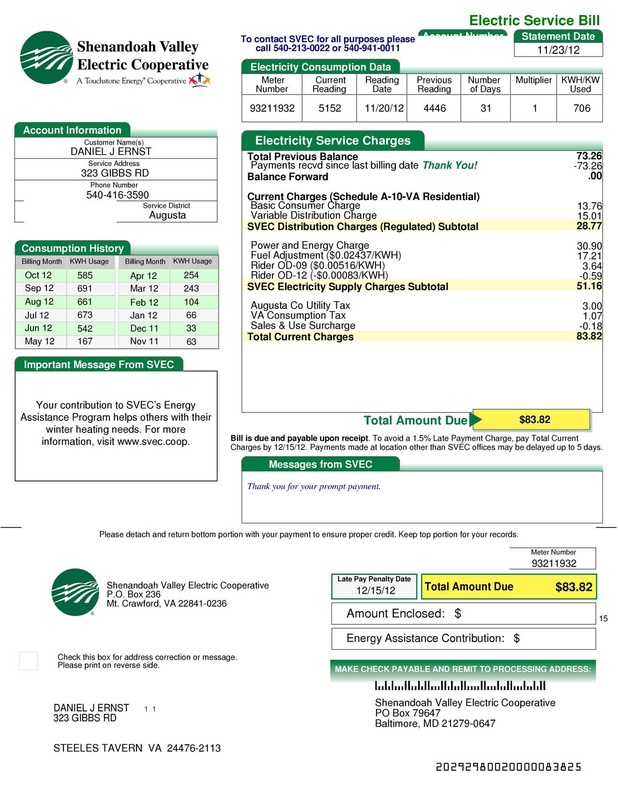In this post, I'll take it out of the theoretical world, provide a clear example.
We moved into our Passive Bauernhaus in June 2012, but didn't get our first full month electric bill until July. Since then, the electric bill for our Passive Bauernhaus has averaged 663 kWh/month or $81.04/month. This total includes the typical $25 - $30 service charge.
Since it is an all-electric house, we only pay one bill. There's no propane, natural gas, or firewood. Electricity covers all of our loads:
Well water (pumping)
Domestic Hot Water
Heating / Cooling
Ventilation
Lighting
Appliance Loads
Plug Loads (computers, TV, alarm clock, coffee maker, etc.)
I recently dug into our townhouse financial records to look at our utility bill history. After tallying the numbers, our average monthly townhouse bill came to $243.83 (for a full calendar year). The lowest month came to $122.91; the highest jumped to $429.87.
We haven't lived through a full calendar year in the Passive Bauernhaus, so it may be a little premature to call this one . . . but I can't resist. I say that because we're tracking right in-line with the PHPP energy modeling software.
Here's the bottom line: we're saving > $150 / month.
It's not earth shaking, but it's not too shabby either. It becomes significant when you project this over a typical 30 year mortgage.
And . . . it provides the margin that allows a Passive House to reach cost parity.


 RSS Feed
RSS Feed